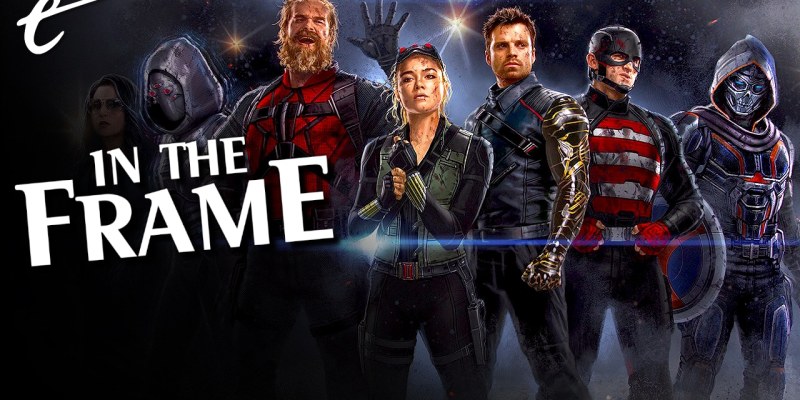At D23 this weekend, Marvel Studios unveiled the lineup of its upcoming Thunderbolts project, due to be directed by Jake Schreier.
Some of the lineup was predictable, particularly considering the presence of Valentina Allegra de Fontaine (Julia Louis-Dreyfus) in the post-credit stinger to Black Widow and in the closing episode of The Falcon and the Winter Soldier. As such, it makes sense that the movie’s ensemble includes both Yelena Belova (Florence Pugh) and John Walker (Wyatt Russell). However, what was surprising was the extent to which the rest of the ensemble is drawn from those two stories.
The lineup further includes Red Guardian (David Harbour) and Taskmaster (Olga Kurylenko) from Black Widow, along with Bucky Barnes (Sebastian Stan) from the Captain America franchise. It is also perhaps notable that the most obvious absence from this lineup for comic book fans was Baron Helmut Zemo (Daniel Brühl), another Captain America alumnus. The only featured player from outside those two sub-franchises is Ghost (Hannah John-Kamen) from Ant-Man and the Wasp.
The result of all of this is that Thunderbolts feels more like it is being positioned as a stealth sequel to both Black Widow and The Falcon and the Winter Soldier than an honest-to-goodness superhero (or supervillain) team-up movie. This is an interesting choice, particularly in the context of Marvel’s somewhat muddy plans for its epic “Multiverse Saga,” which is still missing a clear backbone. It’s likewise still unclear who the central players are supposed to be, despite a deluge of content.
Looking at the announced film slate, allowing for both Guardians of the Galaxy Vol. 3 and Fantastic Four as movies about self-contained superhero teams, Thunderbolts stood out as the only potential team-up movie before the double-whammy of both Avengers: The Kang Dynasty and Avengers: Secret Wars. It seemed like a clever inversion of the original Avengers, what could be a cool supervillain team-up movie that could clarify the stakes of the saga and streamline narrative threads.
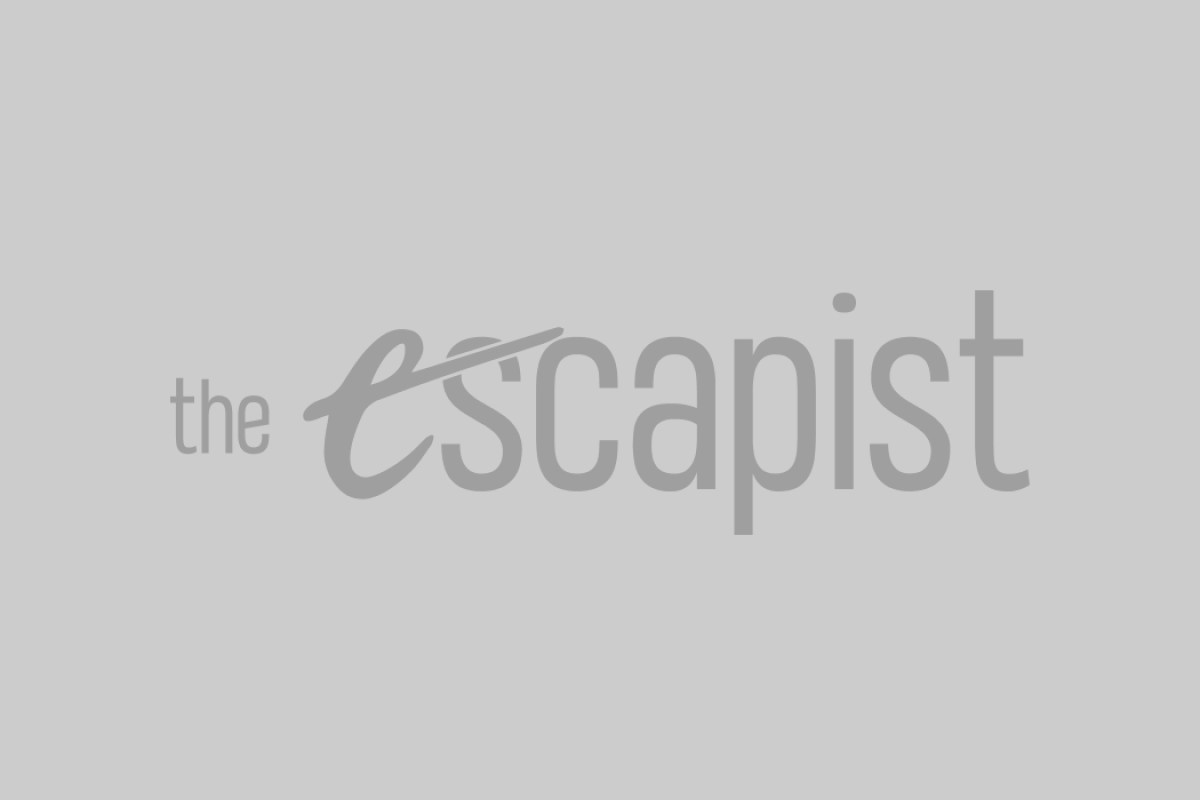
After all, the Marvel Cinematic Universe (MCU) has existed for almost a decade and a half. Allowing for the films’ tendency to kill off antagonists, there are a host of quirky surviving supervillains from the various franchises that could have been folded into Thunderbolts: the Abomination (Tim Roth) from The Incredible Hulk, Justin Hammer (Sam Rockwell) from Iron Man 2, the Grandmaster (Jeff Goldblum) from Thor: Ragnarok, even Karl Mordo (Chiwetel Ejiofor) from Doctor Strange.
Of course, these characters would arguably be an odd fit for one another, coming from different worlds and having different perspectives. However, that incongruity is part of the appeal of superhero team-up stories. The Avengers features an ensemble composed of a frozen super soldier, a Norse god, an arms dealer, a mad scientist, and two secret agents. The Guardians of the Galaxy franchise focuses on a team that includes a talking raccoon and a sentient tree. That’s the fun of it.
There are characters in that ensemble who would have very different ways of understanding the world, from the cosmic Grandmaster to the grounded Hammer. Mordo is a deathly serious character who sees himself as the hero of his own narrative, while Hammer is an amoral capitalist with no scruples or decency. The Abomination is a soldier changed through science, while Mordo is a magician who operates by a different set of cosmic rules. Those contrasts are the joy of a superhero team-up.
Movie adaptations are obviously unbeholden to the source comic books, and fidelity is no assurance of quality. However, as a comic book, Thunderbolts has been built on this incongruity from the beginning. The initial lineup curated by writer Kurt Busiek and Mark Bagley included villains from a wide variety of sub-franchises. Baron Zemo was an enemy of Captain America, Beetle was a Spider-Man foe, and Moonstone was initially associated with the Incredible Hulk.
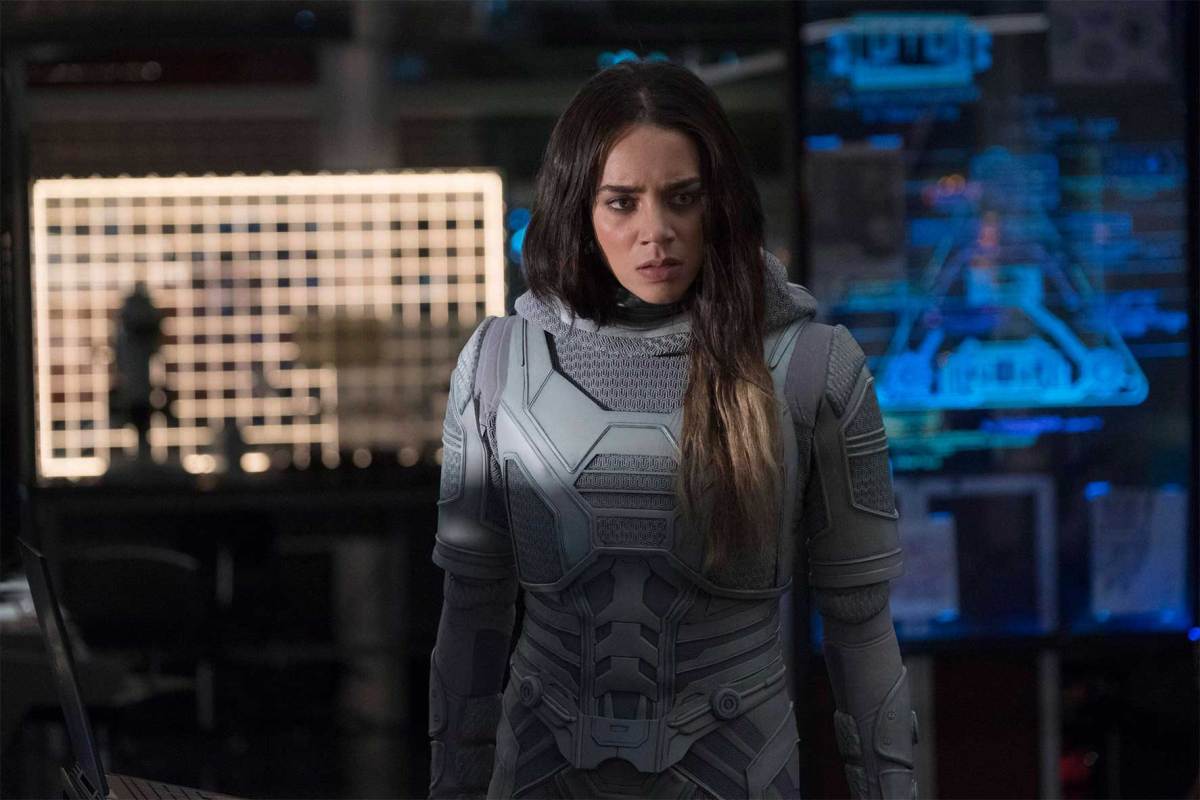
Later iterations of the team maintained this variety. Jeff Parker’s run made the swamp monster Man-Thing part of a group led by street-level hero Luke Cage. That team also included mainstays like Moonstone, along with X-Men villain Juggernaut and an Asgardian who had been raised by trolls. At its core, like its obvious companion book Suicide Squad over at the Distinguished Competition, Thunderbolts has always celebrated the depth and breadth of the shared universe in which it is set.
James Gunn’s work on The Suicide Squad was a love letter to the weirdness of comic book storytelling, with an ensemble built around super soldiers like Bloodsport (Idris Elba) and Peacemaker (John Cena), alongside bizarre monsters like King Shark (Sylvester Stallone), living cartoons like Harley Quinn (Margot Robbie), and oddities like Polka-Dot Man (David Dastmalchian). The tensions from throwing all those characters together was a large part of the joy of that movie.
There is a great moment early in The Suicide Squad, when Amanda Waller (Viola Davis) introduces Bloodsport to his team. He takes exception to the redundancy of including Peacemaker on the team, given their similar backgrounds. “Are you having a laugh?” Bloodsport protests. “You just said each member of the team is chosen for their unique abilities. He does exactly what I do.” Indeed, the climax of The Suicide Squad reveals that Peacemaker is very much a liability for the team.
In contrast, the announced ensemble of Thunderbolts is populated by characters who do exactly what their teammates do. They are all effectively super soldiers and heavily grounded in the same militaristic post-9/11 understanding of superhero stories that was codified by movies like Batman Begins and Iron Man. The Avengers had Tony Stark (Robert Downey Jr.) boldly declare that his team was “not soldiers,” but it’s over a decade later and it seems like they still are.
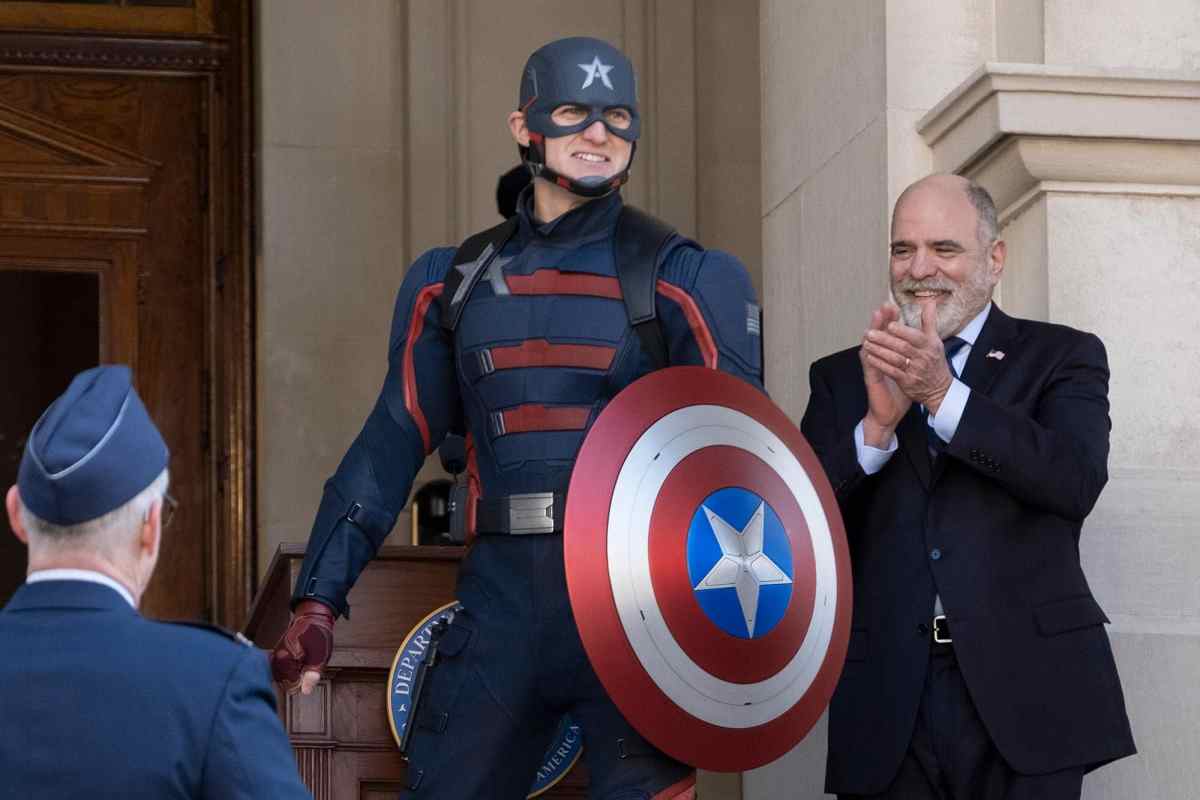
The way that this lineup positions Thunderbolts as more crossover sequel to the Captain America franchise than a separate superhero team-up is especially perplexing considering that it will release just two months after an actual sequel to Captain America, headlined by Anthony Mackie as the eponymous superhero. It seems like Captain America: New World Order and Thunderbolts will both be sequels to The Falcon and the Winter Soldier, with the core cast split across both movies.
Mackie has finally been affirmed as the new big-screen Captain America five years after accepting the shield in Endgame, but he won’t get to claim the franchise as his own in the way that Chris Evans did. Instead, it seems like Mackie has to accept joint custody of the brand’s iconography and cast with Thunderbolts. It seems notable that New World Order won’t even feature an established Captain America villain, instead facing the Leader (Tim Blake Nelson) from The Incredible Hulk.
There is a strange aesthetic conservatism to Marvel Studios’ output, a reluctance to lean into what makes the source comics so compelling in the first place, perhaps out of some fear of potential embarrassment. It’s obvious in the way that the overwhelming majority of the studios’ output maintains the same jokey self-aware tone even when it’s inappropriate or how the company’s attempts to reference other genres and styles inevitably bend back to the house style.
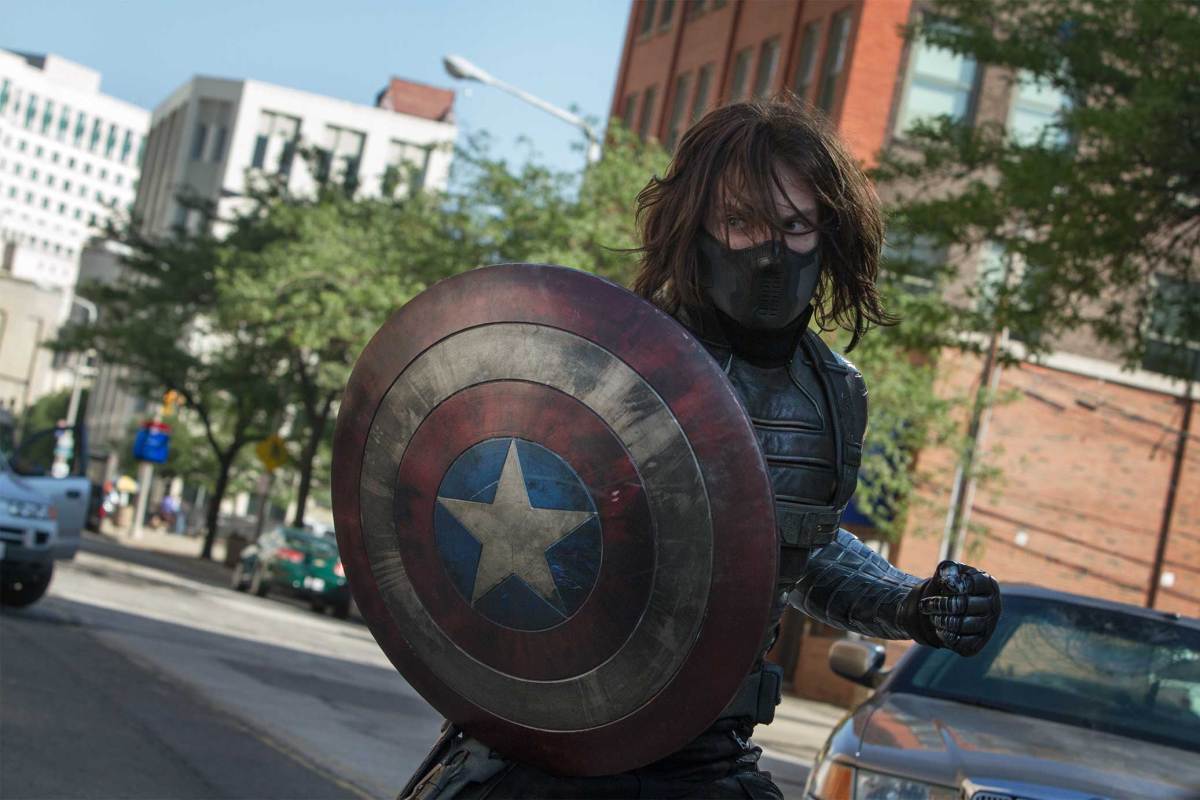
The most exciting Marvel announcement at D23 was the trailer for the company’s upcoming Halloween special, Werewolf by Night. Directed by composer Michael Giacchino, the black-and-white trailer looks like a loving homage to both old-fashioned horror movies and to the sorts of black-and-white monster comics that the publisher used to put out. This is the most successful franchise on the planet. It can afford to take more creative risks, even in the midst of a midlife crisis.
To be fair, this is just the announced lineup. There is reason to be hopeful about Thunderbolts. Director Jake Schreier was responsible for the wonderful Robot and Frank, another movie about an unlikely criminal team-up that was surprisingly charming. According to insiders, Schreier’s pitch for Thunderbolts “blew away execs,” although it’s unclear if he picked the members of the team or if they were dictated to him.
Still, the announced lineup feels very modest and very samey. With over a decade of continuity, the MCU is a big wide superhero universe, populated with a variety of interesting characters. Its supervillain epic should be able to rustle up more than six super soldier variations on a team.
